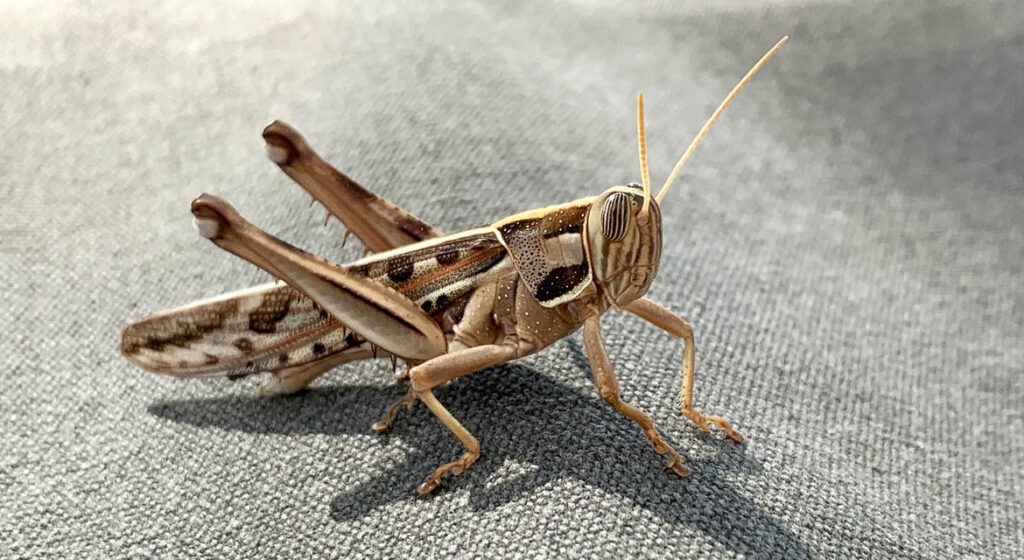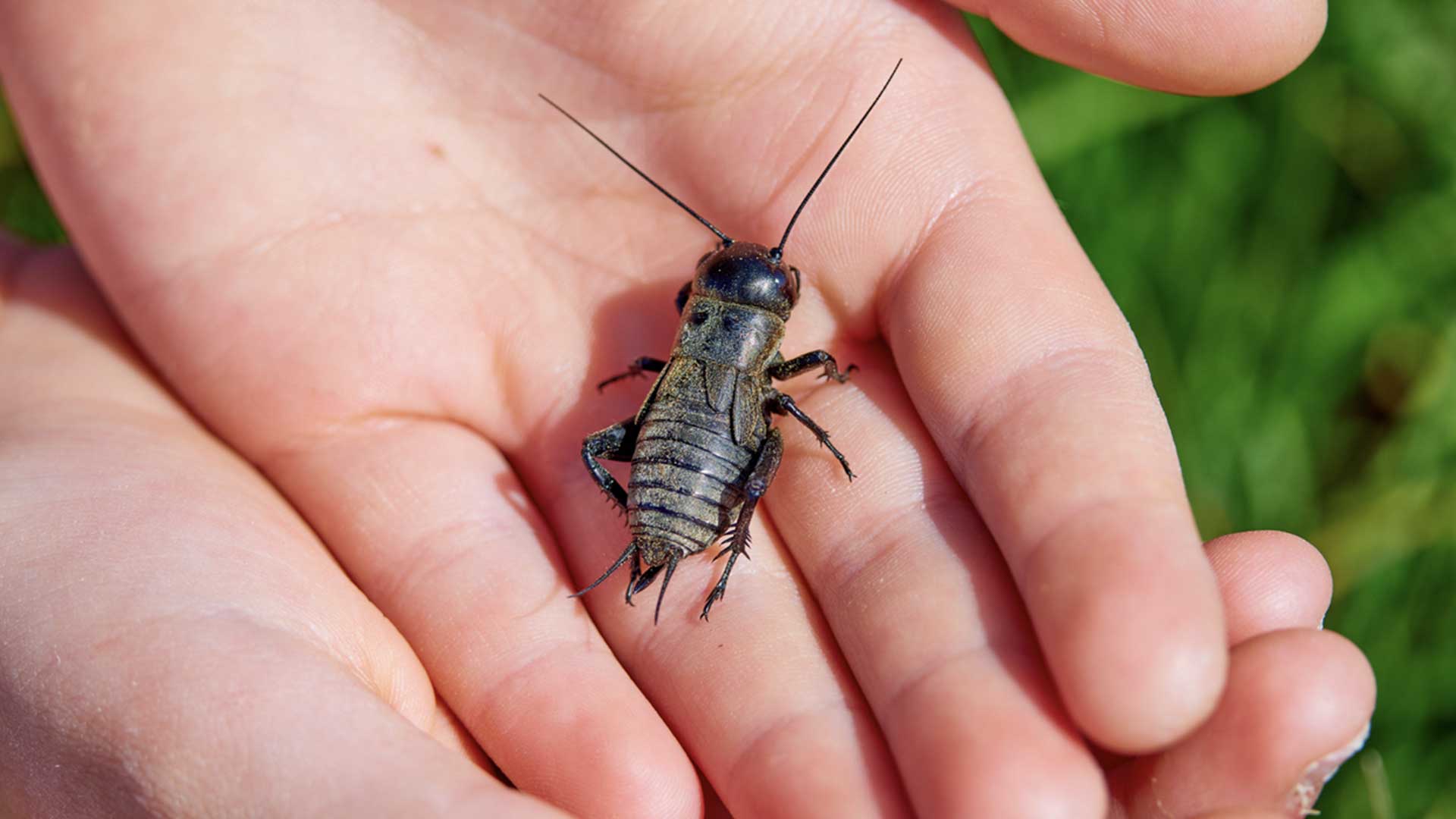
Crickets and Human Health: Harmful or Safe?
Crickets can potentially trigger allergic reactions in some individuals, but they also offer valuable nutritional benefits as a sustainable source of protein and essential nutrients. Proper handling, hygiene, and cooking techniques are essential to minimize contamination risks and ensure their safe consumption. Here are three key points to keep in mind:
- Some individuals may experience allergic reactions to cricket proteins, emphasizing the need for caution when handling or consuming them.
- Crickets offer nutritional benefits, being a sustainable and nutritious source of protein, essential amino acids, vitamins, and minerals.
- Proper handling, processing, and cooking are crucial to mitigate contamination risks associated with pathogens or parasites that crickets may carry.
Crickets and Human Health Overview
Have you ever been outside on a warm summer night, enjoying the peaceful sounds of nature, when suddenly you hear a high-pitched chirping sound? That sound is most likely coming from crickets. These small insects are known for their distinctive songs, which they produce by rubbing their wings together.
Crickets do not present a problem when they remain outside. In fact, they can be beneficial to the environment. However, when they come in close contact with humans, they can pose a problem.
This article discusses crickets, their role as pests, and whether they harm human health. Keep reading to learn everything you need to know about how to prevent and solve your cricket infestation.
Potential Dangers of Crickets in or Around the Home
Crickets are small insects commonly found in areas with lots of vegetation or near outdoor lighting. While crickets are generally considered harmless and even beneficial in certain contexts, they can cause a few potential issues. Below we discuss some potential dangers and inconveniences of crickets in or around your home.
House Crickets Can Cause Problems Inside the Home.
House crickets are the most common type of cricket in the United States, including Texas. While they are harmless to humans, house crickets can create many problems if they get inside your home. The following issues are the most common.
- Damage: House crickets can cause damage to fabrics, paper products, and even furniture.
- Chirping: House crickets are known for their loud chirping noises, which can be quite annoying, especially at night when you are trying to sleep.
- Other pest infestation: House crickets are prey to other pests, such as spiders and rodents, so their presence can cause other pest infestations.

Truly Nolen GUARANTEE
If you’re not completely satisfied, you’ll get a full refund on your most recent service with our 100% money back guarantee.

$50 Off Year Round Pest Control
Truly Nolen is a family-owned company with 85 years of experience providing the best pest control. If you’re not completely satisfied, you’ll get a full refund on your most recent service with our 100% money back guarantee.
Field Crickets Can Attract Other Pests and Cause Infestations.
Field crickets are another common type of cricket found in the United States. Unlike house crickets, field crickets typically live outdoors. However, they can occasionally come indoors looking for food or shelter. While they do not pose as much threat as other insects, field crickets can still cause problems if you leave their population unchecked.
One of the biggest issues with field crickets is that their presence often indicates another pest infestation. Field crickets feed on the same food sources as other pests. They are also prey for pests, such as rodents.
Keeping your lawn and garden well-maintained is important to prevent field cricket infestations in your home. You may also consider using insecticides or other pest control measures if you notice an infestation.
Camel Crickets are a Threat to Doors and Can Fall from High Places.
Camel crickets, also known as cave crickets, are another type of cricket commonly found in Texas homes. These pests are typically brown or gray and have long legs which allow them to jump great distances.
One of the biggest issues with camel crickets is that they can damage doors and other structures around your home. The damage occurs because camel crickets like to hide in small spaces, such as door frames or cracks in walls. Over time, their constant jumping and movement can cause these structures to weaken or break down.
Another issue with camel crickets is that they can fall from high places, such as ceilings or light fixtures. While not dangerous, this situation can be quite alarming for homeowners not expecting it.
Seal any cracks or gaps around your doors and windows to prevent camel cricket infestations in your home. Consider using sticky traps or insecticides if you notice an infestation.
Black Crickets Can Leave Feces that May Cause Infection or Rash.
Black crickets are typically black and have wings that allow them to fly short distances. While they do not threaten Texas homes as much as other insects, black crickets can still cause problems if they enter in large numbers.
Most importantly, black crickets leave behind feces, which can cause an infection or rash if the feces come into contact with human skin.
The Wings of Crickets Can Carry Bacteria, Posing a Risk to Humans.
One of the biggest risks associated with any cricket species is that its wings can carry bacteria that could harm humans. House crickets are especially prone to carrying this type of bacteria.
If you come into contact with cricket wings, wash your hands thoroughly with soap and water immediately.
Can Crickets Bite Humans and Cause Harm?
The short answer is yes; crickets can bite humans. However, it is rare for them to do so. Crickets use their mandibles to chew on plants and insects, not humans. Some crickets species do not have mandibles that will even penetrate human skin. Crickets of all species only bite if they feel threatened or trapped.
A cricket bite may cause mild pain and redness around the affected area, but it is not harmful. In most cases, the pain and redness will go away within a few hours without treatment.
What To Do If A Cricket Bites You
If a cricket bites you, there are some steps you can take to alleviate any discomfort:
- Wash the affected area with soap and water.
- Apply an ice pack or cold compress to reduce swelling.
- Take over-the-counter pain medication if needed.
- Monitor the area for signs of infection, such as redness or pus.
In some rare cases, a person may have an allergic reaction to cricket bites, resulting in more severe symptoms, such as difficulty breathing or swelling of the face or throat. If you experience severe symptoms after being bitten by a cricket, seek medical attention immediately.
Can Crickets Transmit Diseases Like The Flu To Humans?
No evidence exists that crickets can transmit diseases to humans. While some insects, such as mosquitoes and ticks, are known carriers of disease-causing pathogens, crickets do not pose a significant disease risk.
Prevention Methods for Keeping Crickets Away from Your Property
Crickets’ incessant chirping, potential damage to fabrics, and occasional indoor presence can disrupt the tranquility of your home. Below, we explore a range of proven prevention methods to keep crickets out of your home. By implementing these strategies, you can reduce their numbers, minimize their intrusion, and enjoy a cricket-free living space.
Use Pest Control Methods to Keep Crickets Away from Your Property
The most effective way to prevent crickets from invading your property is by using pest control methods. Insecticides and natural remedies, such as diatomaceous earth, are available. Always follow the instructions on the label carefully when using pest control methods to exterminate crickets.
Take Steps to Seal Cracks and Openings in Doors and Windows to Prevent Crickets from Entering
Crickets can enter your home through small cracks and openings in doors and windows. To prevent this, seal any gaps or holes with caulk or weatherstripping. Check your doors and windows regularly for any signs of wear or damage that could allow pests inside.
Plant Mint, Lavender, or Citronella Around Your Property as a Natural Deterrent for Crickets
Certain plants’ scents, such as mint, lavender, or citronella, repel crickets. Planting these around your property is a natural way to help keep crickets away. You can also use essential oils from these plants as a natural cricket repellent.
Use Wallpaper or Other Textured Surfaces to Make It Hard for Crickets to Climb Walls.
Crickets have sticky pads on their feet that allow them to climb walls easily. However, climbing surfaces with textures, such as wallpaper or rough paint, is challenging for them. Consider using textured surfaces on walls where you have noticed cricket activity.
Cricket Damage to Properties
Crickets are a nuisance and can cause significant damage to homes and properties. Even though they are not dangerous to human health, a cricket infestation can cause considerable damage to your home.
Here are some points to consider when it comes to cricket damage.
How Cricket Infestations Can Cause Damage
Cricket infestations can cause a lot of damage to your home. Most of this damage occurs because of the pest’s feeding habits.
Crickets prefer to feed on natural fibers, such as the following.
- Cotton
- Silk
- Wool
- Leather
- Wood
- Bamboo
They also like to chew on synthetic materials like nylon and polyester. When crickets eat through these fabrics, they leave holes and tears that weaken the material’s integrity and cause unsightly damage.
Preventing Cricket Damage
Preventing cricket damage requires vigilance and persistence. You should regularly inspect areas where crickets may be present, such as basements or crawl spaces, for signs of infestation.
In addition to regular monitoring, the following prevention techniques can help keep crickets out of your home.
- Repair and seal cracks: Inspect your property for cracks or gaps in walls, foundations, windows, and doors. Use caulk, weatherstripping, or other appropriate materials to seal the gaps and prevent cricket access.
- Install window and door screens: Use screens on windows and doors to create a barrier that keeps crickets from entering your home. Ensure the screens are in good condition and free from tears or holes.
- Remove clutter and debris: Keep your property tidy by removing debris, such as piles of wood, leaves, and overgrown vegetation, which can harbor crickets.
- Store clothing and fabrics properly: Store clothing, upholstery, and curtains in sealed containers or garment bags to prevent cricket damage. Consider using mothballs or cedar chips as natural deterrents.
- Use insecticides as a last resort: If other preventive measures are ineffective, consider using insecticides labeled for crickets. Follow the instructions carefully, and only use the insecticides in areas where you have seen crickets.
Are Crickets Harmful to Humans?
Crickets become pests in large numbers when they enter your home, but they have also gained popularity as a healthy and sustainable food source in recent years. The question remains, however: Are crickets harmful to humans?
Below, we will explore this topic in-depth and provide all the information you need to keep yourself and your family safe.
Crickets Are Not Harmful to Humans
Crickets are not harmful to humans, but they can be beneficial. Crickets are an excellent source of protein and essential nutrients such as iron, calcium, and vitamin B12. Studies have shown that crickets contain up to 70% protein by weight – more than double that of beef!!
Aside from their nutritional value, crickets are also low in fat and cholesterol and do not contain sugar or carbohydrates. Thus, farm-raised crickets can be a healthy addition to your diet without causing adverse health effects.
Ingesting Wild Crickets Can Lead to Health Problems
Many cultures eat farmed crickets as food. However, ingesting wild crickets can lead to health problems for humans. Wild crickets often feed on food contaminated with pathogens, such as Salmonella, that could cause severe gastrointestinal distress, including diarrhea and vomiting.
Additionally, studies have shown that crickets can accumulate heavy metals and other toxins in their bodies, which could harm humans.
Allergic Reactions
While most people can safely consume crickets without experiencing any negative side effects, some individuals may be allergic to them. Symptoms of an allergic reaction may include the following.
- Itching or swelling of the skin
- Difficulty breathing or swallowing
- Nausea
- Vomiting
Keep in mind that allergic reactions to crickets are rare and usually occur only in individuals with pre-existing allergies or sensitivities. If you are unsure whether you are allergic to crickets, consult your doctor.
Disease Transmission
Another concern that some people may have is whether crickets can transmit diseases. However, no evidence suggests that crickets can spread any diseases to humans.
Professional Treatments to Remove Crickets
If you are dealing with a cricket infestation in or around your home, you should take action as soon as possible. While crickets may not directly threaten humans, they can cause damage to your property and cause other pest infestations.
One effective way to remove crickets from your home is through professional treatments. Pest control companies have access to specialized equipment and products that can eliminate crickets quickly and safely. They also have the expertise to identify potential entry points and prevent future infestations.
Don’t let crickets take over your home – take action by calling a professional pest control company today!

$50 Off Year Round Pest Control
Truly Nolen is a family-owned company with 85 years of experience providing the best pest control. If you’re not completely satisfied, you’ll get a full refund on your most recent service with our 100% money back guarantee.
Frequently Asked Questions
How do I get rid of crickets in my home?
To get rid of crickets in your home, you can start by removing their food sources, reducing moisture, and sealing entry points. Additionally, using insecticides or traps specifically designed for crickets can help control the infestation.
What attracts crickets to my home?
Crickets are attracted to areas with abundant food sources like vegetation, organic matter, or even pet food. They are also drawn to moisture, warmth, and areas with hiding spots. Outdoor lighting can also attract crickets, leading them to enter your home.
Are crickets harmful to humans?
Generally, crickets are not harmful to humans. They do not bite or sting and are not known to transmit diseases. However, their chirping sounds can be annoying, and large infestations may cause damage to fabrics, paper, or certain plants. Learn more about crickets
How long do crickets live?
The lifespan of crickets can vary, but on average, adult crickets live for about 8 to 10 weeks. However, some species of crickets can live up to several months.
How can I prevent cricket infestations?
To prevent cricket infestations, you can take several steps. Keep your home clean and free of clutter, especially in areas where crickets might hide. Seal cracks and crevices around windows, doors, and foundations to prevent their entry. Remove outdoor debris, trim vegetation, and reduce excessive moisture in and around your home. Learn More!

